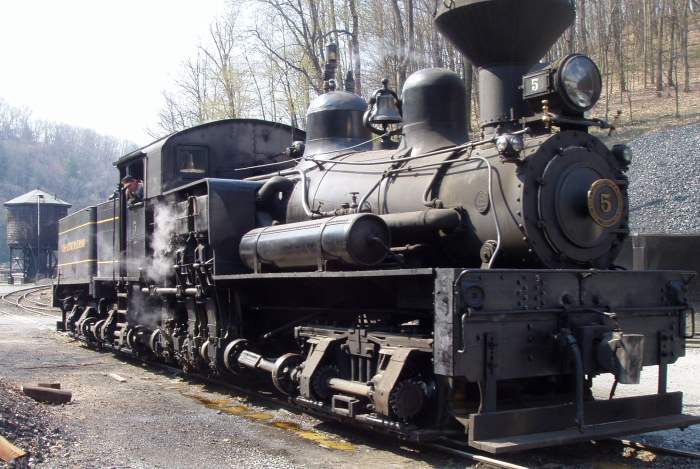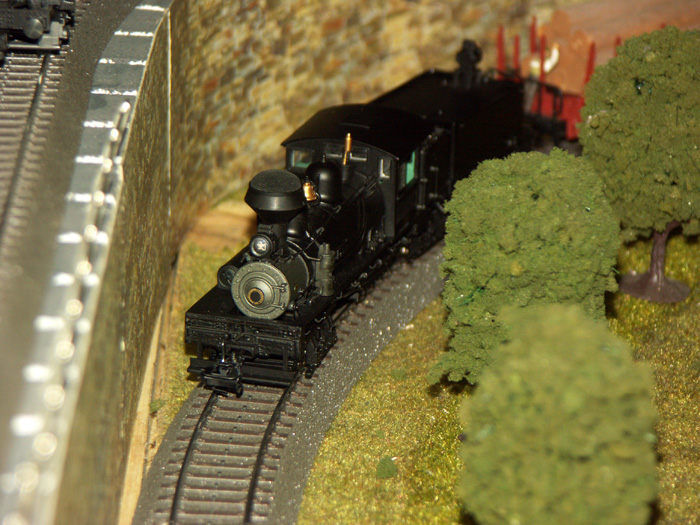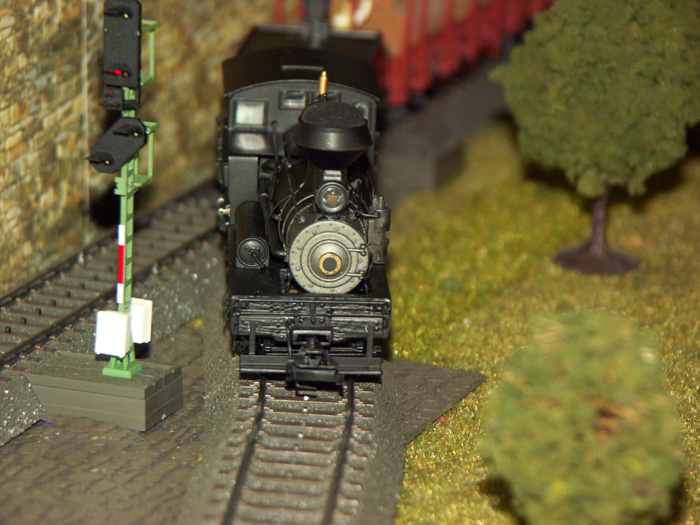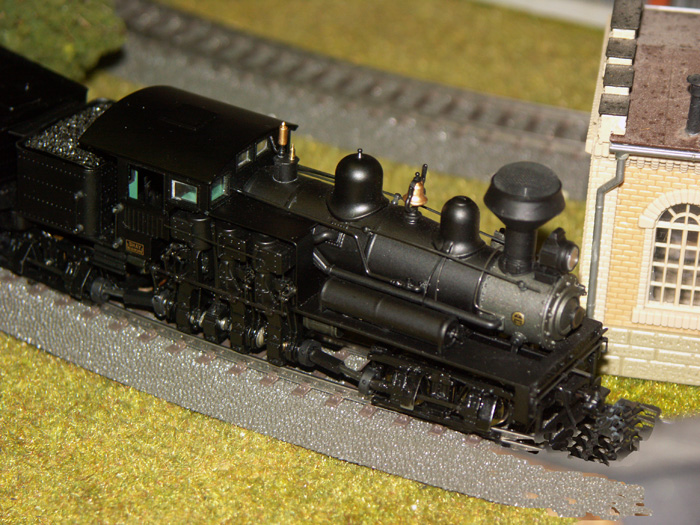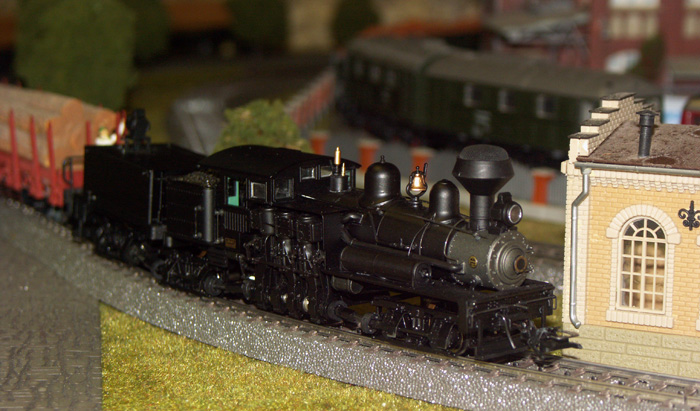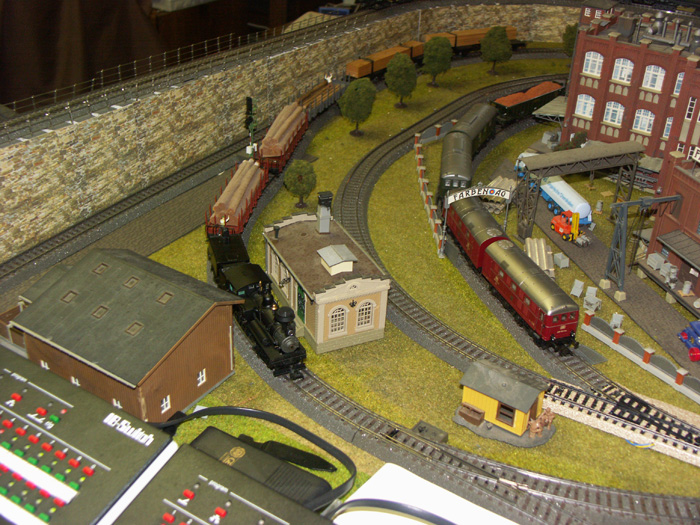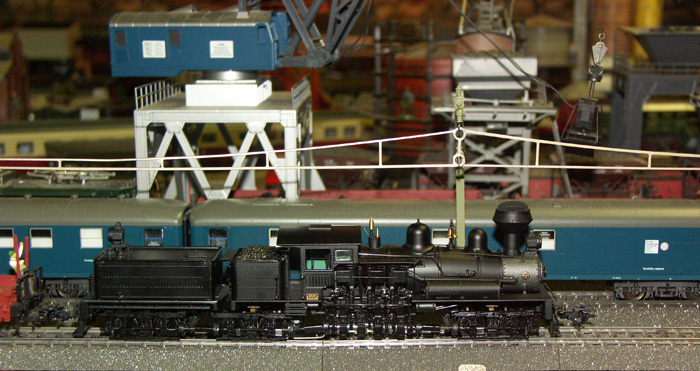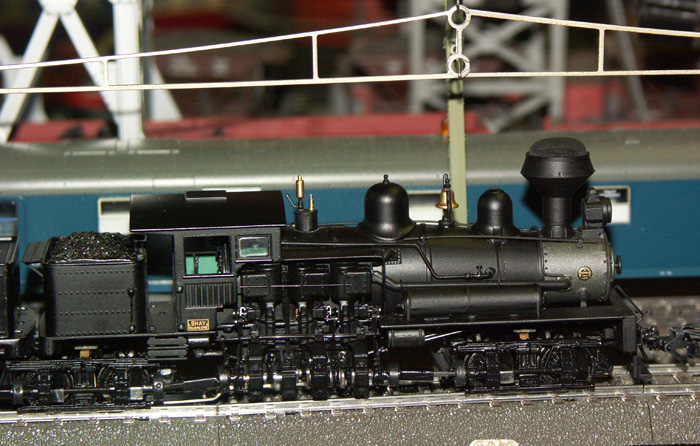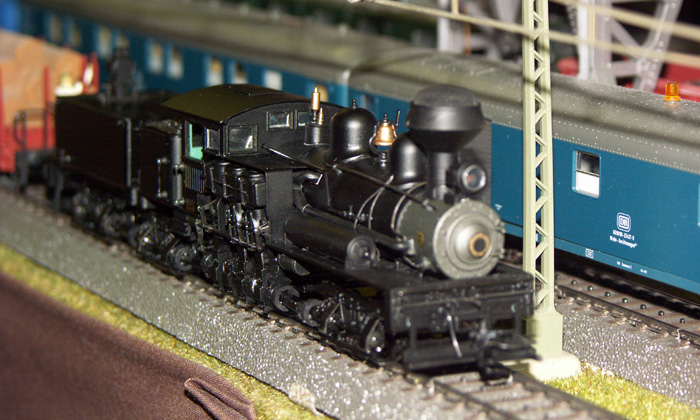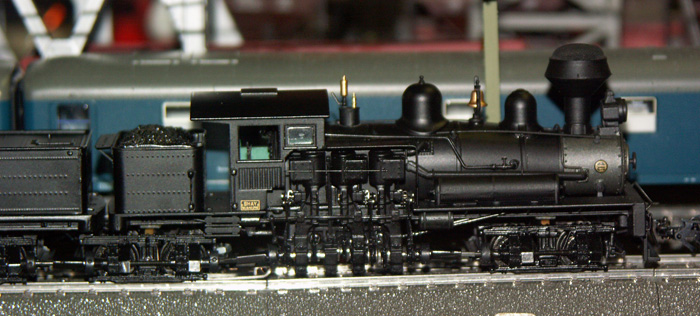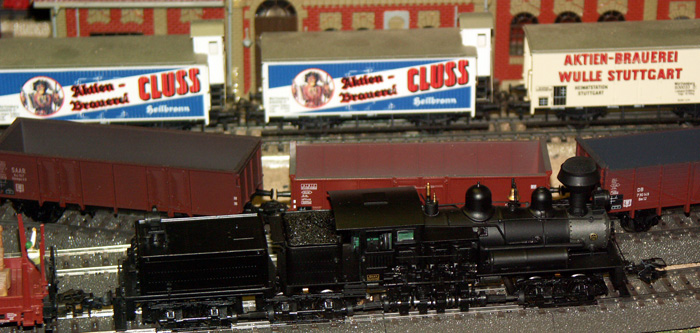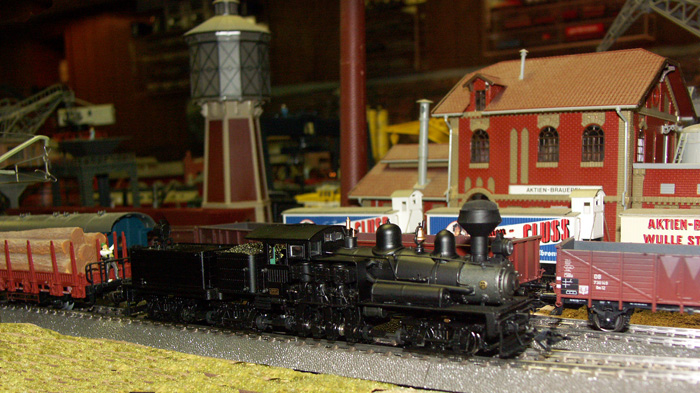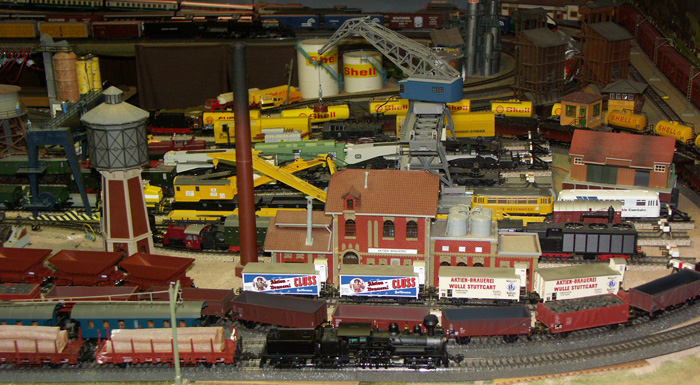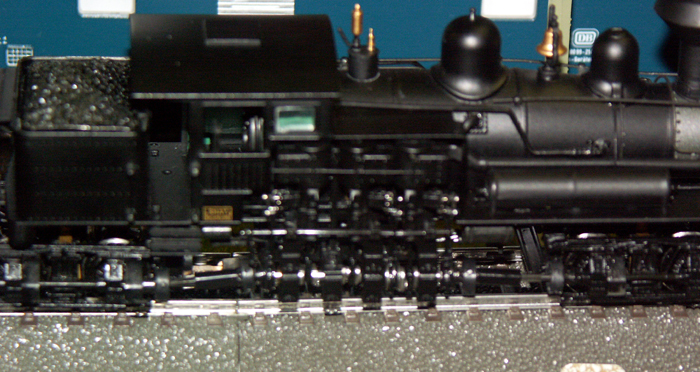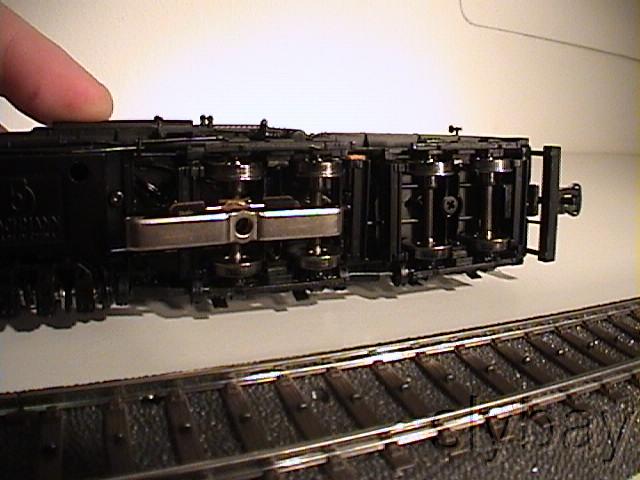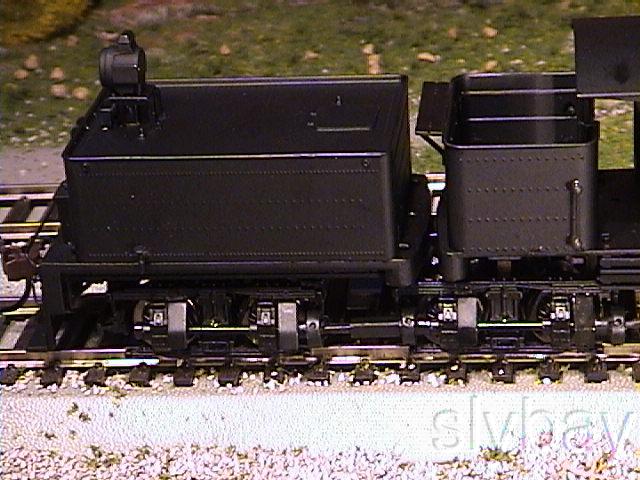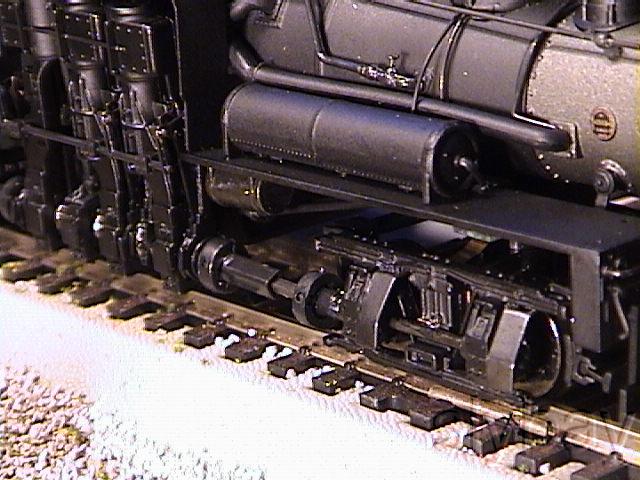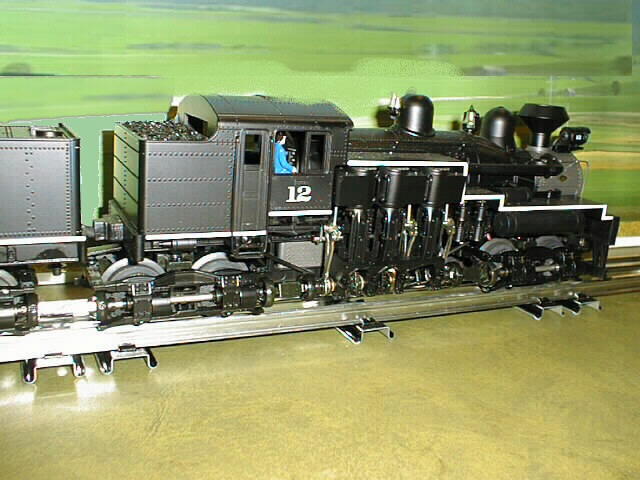

Below this text are pictures and videos of my Bachman 80 ton three truck shay converted to digital by Martin Obert. The lok was DC but Martin added a slider, Marklin wheels, and an Uhlenbrock decoder. The lok runs well on C track but shorts frequently on M track. This problem was not caused by Martin, rather it was a switch/low wheel incompatibility problem. I thought of ways to insulate the underside of the trucks in hopes that this would prevent the shorting. The trucks are very low.
When I first mentioned this to the Bar & Grill list serve, Jacques Vuye, (aka Dr. Eisenbahn) offered to fix this problem and to install a sound decoder as well. He did both and now the Shay runs well and sounds great but it took quite a bit of work to arrive at these points.
The main problem was to find a way to install a pick up shoe under the bogie with enough clearance that it would not "lift" the wheels while crossing a switch. This was achieved by designing and fabricating a small brass insert that fits in the second bogie transversal beam. A Uhlenbrock decoder with a SUSI interface connected an Uhlenbrock Intellisound unit was used by Jacques. It was programmed with the sounds for a Shay (Jacques had heard them at the Roaring Camp RR near Santa Cruz CA)
All did not go as planned. Disaster struck as he reassembled the tender: the fragile plastic beam broke in a half-dozen pieces and there was no way to glue it back together. He carefully took apart the front bogie and measured the transversal beam in order to try to reproduce it accurately. This was critical because that part determines the proper spacing between the axles' bearings, the alignment of the transmission shaft and the accurate mesh of the bevel gears. After a couple of unsuccesful attemps at other fabrication methods, he finally carved it out of one piece of solid brass using a milling machine.
The combination of a complex shape, with small dimensions and the precision required, made for an exciting challenge. In order to do this he devised two new clamping methods on the milling machine and refined his abilty to perform accurate parts indexing. The result, the third bogie is now much sturdier that the two others!
Finding the right combination for the pick up position and length was the next biggest challenge.
Finally the best compromise came with a relatively long ski (like used on a Marklin 3031), which may not be optically very pleasing but certainly showed the best performance over switches and double slips.
The sound decoder monitors the lok's condition: when you start, it releases the air brakes, then accelerates with a strong exhaust "chuff chuff" sound. When the lok reaches cruising speed the chuff chuff get a little lighter. If you reduces the speed, no more chuff chuff for a while until the lok reaches its lower speed. Finally the brakes squeal for a few seconds , just before the loks stops. There all kinds of extra "random" noises like water pumps, air pump, etc. And of course a whistle and a bell (when the F4 switching mode is engaged). Because the Shay is so small the sound decoder is located in a permanently attached Märklin bobber caboose.
To see it run and to hear it, click on the video links below.
The most famous of the geared locomotives is probably the Lima Shay built in Lima, Ohio. A unique feature of the Shay is that the engine (i.e. the cylinders) are mounted vertically on the right side of the locomotive with the power transferred to each axle via drive shafts and bevel gears. Because the engine and drive train are on the right side, the boiler is located off center to the left to balance the weight distribution. Having the engine on the side permitted the addition of a third cylinder without upsetting the basic design.
